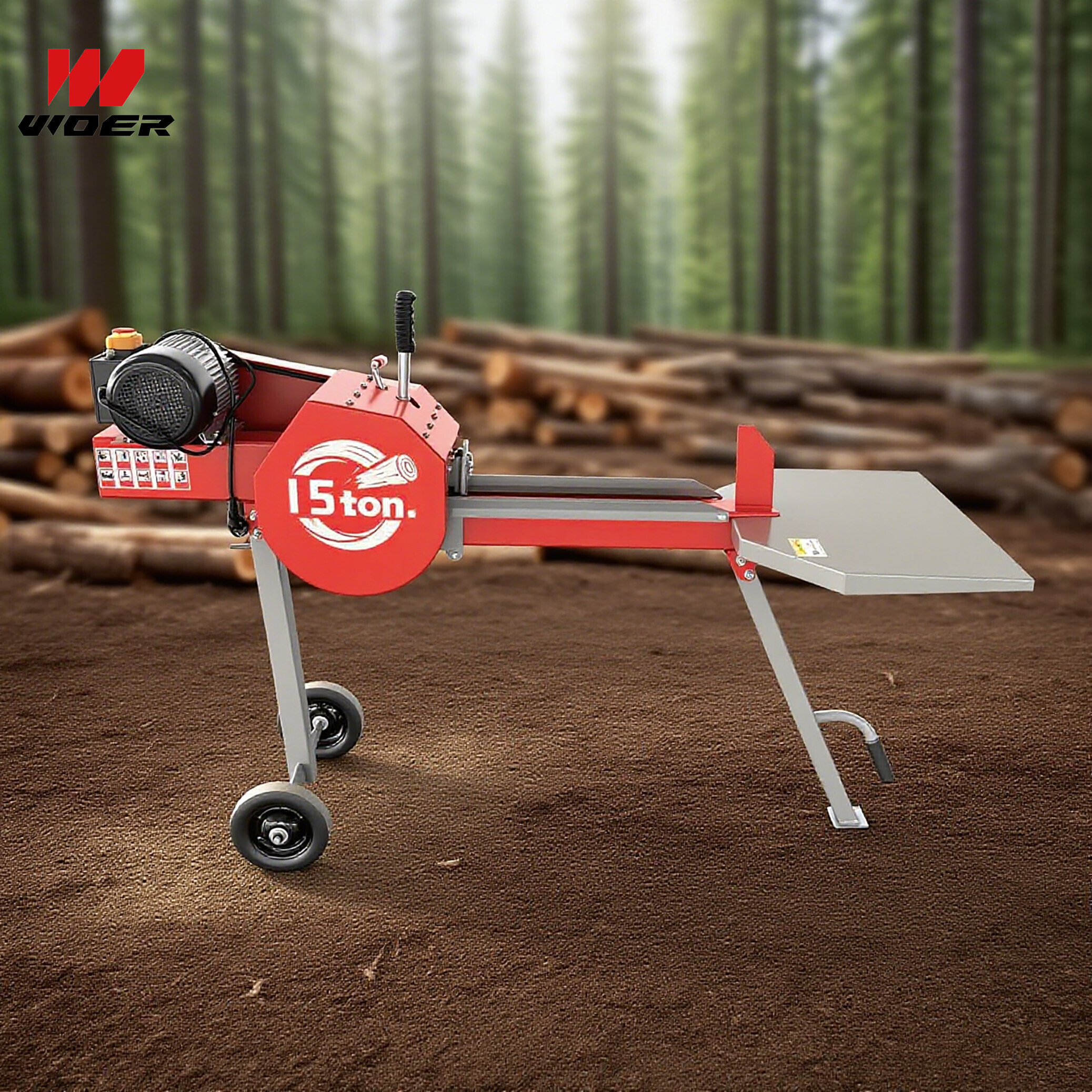Navigation
Contact us
Phone
Message

Overview: What a log splitter delivers and who benefits
A log splitter is a purpose-built machine that converts large rounds into firewood or processing-ready billets. Whether you evaluate a log splitter hydraulic model, an electric log splitter for quieter operation, a kinetic log splitter for high cycle rates, or a log splitter gasoline unit for off-grid mobility, the objective is the same: safe, repeatable splitting with predictable throughput. Buyers range from forestry contractors and sawmill hookups to municipal services and landscaping firms—each with distinct performance and cost expectations.
Types and key characteristics
Hydraulic log splitter
Hydraulic log splitter units rely on hydraulic rams and pumps to generate steady, high splitting force. They are widely used in commercial settings where consistent tonnage and durability matter. A hydraulic log splitter typically offers adjustable force and stroke, making it suitable for a variety of log diameters and species.
Electric log splitter / electric log splitter advantages
Electric log splitters deliver quieter operation, lower maintenance, and clean power deployment. For facilities with reliable electricity, an electric log splitter reduces fuel handling and is often priced competitively—an excellent option when seeking a log splitter for sale cheap but dependable. Electric units shine in residential or light commercial environments where noise and emissions are concerns.
Kinetic log splitter
Kinetic log splitters use stored kinetic energy in flywheels, releasing it for rapid, high-cycle splits. They excel where throughput is critical: firewood contractors and high-volume processing lines. While a kinetic log splitter can be more complex, its performance can offset a slightly higher initial cost by reducing labor and cycle time.
Log splitter gasoline and portability
Gasoline-powered log splitters are best when portability and off-grid use are priorities. They pair well with site-based forestry work or mobile services. Fuel cost and maintenance must be assessed against convenience and location flexibility.
Vertical log splitter
Vertical log splitter configurations allow operators to split long or awkward billets vertically, increasing operator safety and reducing handling. These are commonly available in hydraulic and gasoline platforms and are valuable for workshops processing larger logs.
Quick comparison table
7 Smart buying tips for a cheap log splitter for sale
- Define duty cycle and throughput: Calculate daily or seasonal cubic meters to determine whether a hydraulic log splitter or a kinetic log splitter is appropriate. High throughput favors kinetic systems; intermittent use often fits electric or small hydraulic splitters.
- Match tonnage to wood species: Hardwood requires higher splitting force. Review manufacturers’ rated tons and stroke length—ensure the machine can handle the largest diameter you will process.
- Consider power source and total cost: Compare upfront price of an electric log splitter versus a log splitter gasoline or hydraulic unit, and include fuel, electricity, maintenance and downtime in the TCO evaluation.
- Assess portability and installation: If you need a mobile unit, gasoline models or towable hydraulic splitters are logical. For fixed workshops, an electric or stationary hydraulic log splitter may reduce operating expense.
- Check safety features and compliance: Ensure two-hand controls, automatic return, guards, and lockout features are present. Look for compliance with relevant standards (for example CE marking or comparable regional safety certifications) and reference procedures consistent with ASTM or EN where applicable.
- Evaluate maintenance and spare parts: Review hydraulic hose routing, pump accessibility, and availability of spare seals, valves and electric motors. A cheap log splitter for sale can become expensive if parts lead times are long.
- Request performance validation: Ask vendors for cycle rates, average splitting time under load, and case studies. Request references from similar users to validate claims—this is critical for procurement and financial approval.
Technical specifications & standards to verify
Key specs to request include rated tonnage, stroke length, cycle time, engine or motor power (HP/kW), hydraulic pump flow (L/min), and chassis weight. For safety and durability, refer to applicable standards like ISO/EN machinery directives, and cite ASTM or JIS for material-testing context when evaluating wear components. Technical evaluators should demand test data under load, and review maintenance manuals before signing contracts.
Cost factors and return on investment
Cost drivers include powertrain (electric motor vs. gasoline engine), hydraulic component quality, control systems, and vendor support. A low purchase price is attractive, but labor savings from faster cycle times and less downtime often deliver stronger ROI. Financial approvers should compare lifecycle cost per cubic meter of split wood rather than only upfront capital expenditure.
Safety, environment and maintenance best practices
Operator training and routine inspections reduce accidents and prolong equipment life. Follow a documented maintenance schedule: hydraulic oil changes, hose and seal checks, and motor/engine servicing. Electric log splitters lower emissions and often simplify environmental permitting in urban or indoor facilities.
Procurement checklist for decision-makers
- Confirm required tonnage and throughput targets.
- Specify power source and onsite electrical requirements.
- Verify safety features and applicable certifications.
- Ask for performance data, warranty terms and spare-parts availability.
- Include training and commissioning in the purchase scope.
Case insight and practical example
A regional firewood contractor replaced three aging gasoline splitters with a single kinetic log splitter and a backup electric log splitter. The result: 40% reduction in labor time per cord and lower fuel costs. The initial capital outlay was offset within 18 months—an example procurement case every business should model when projecting ROI.

This stunning beach house property is a true oasis, nestled in a serene coastal community with direct access to the beach.
Contact
West Street, Melbourne Victoria 3000 Australia